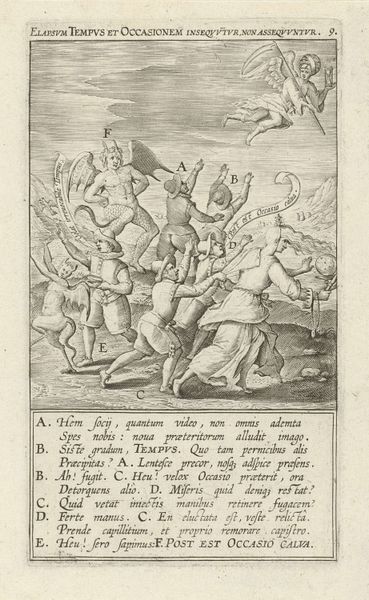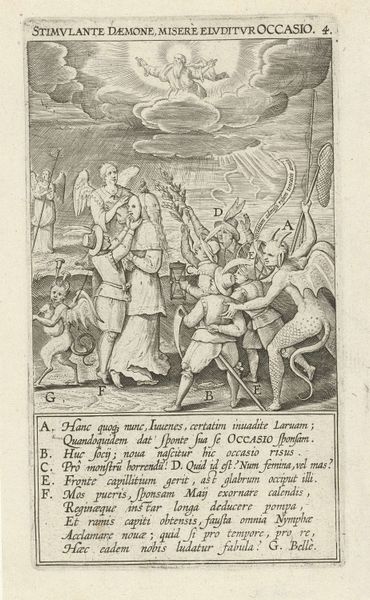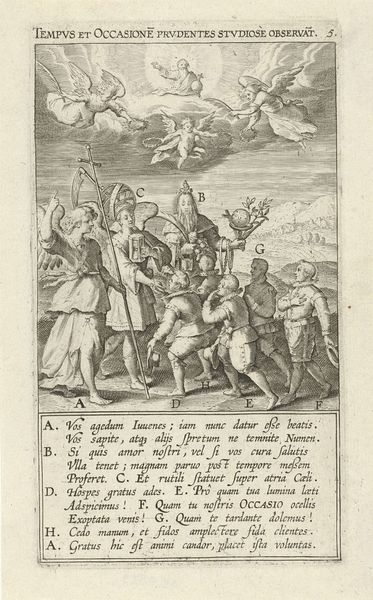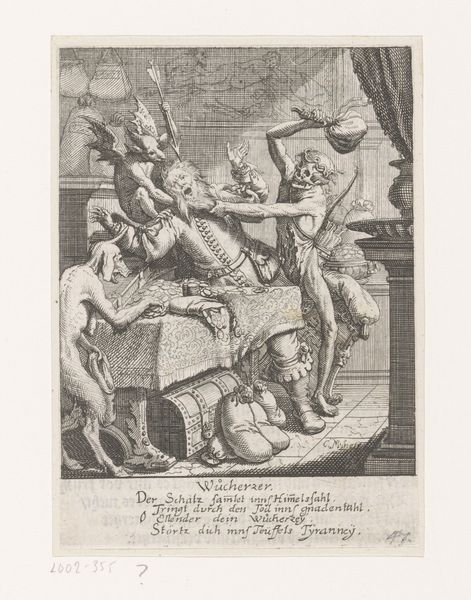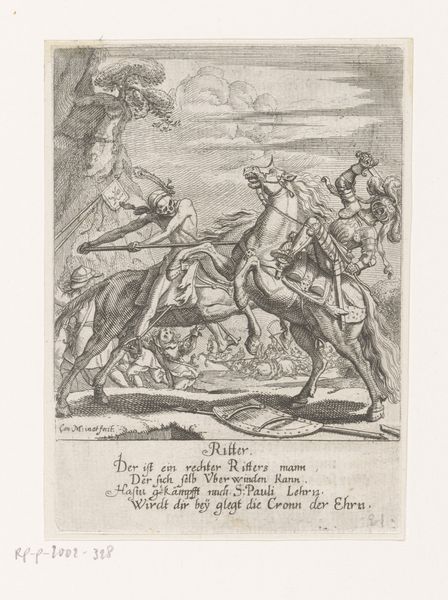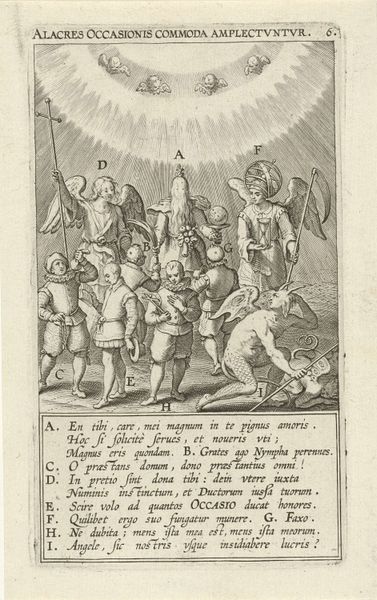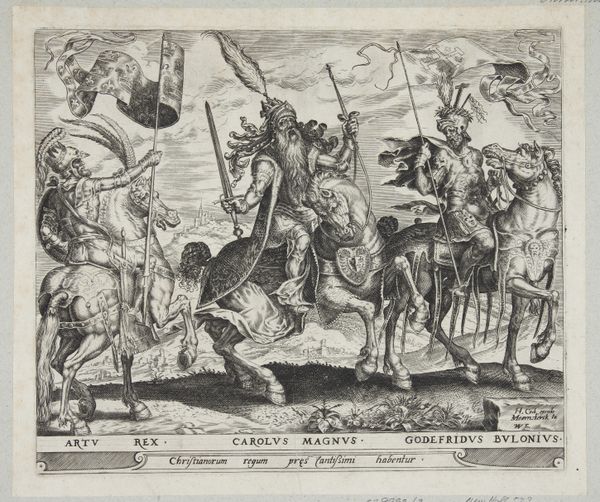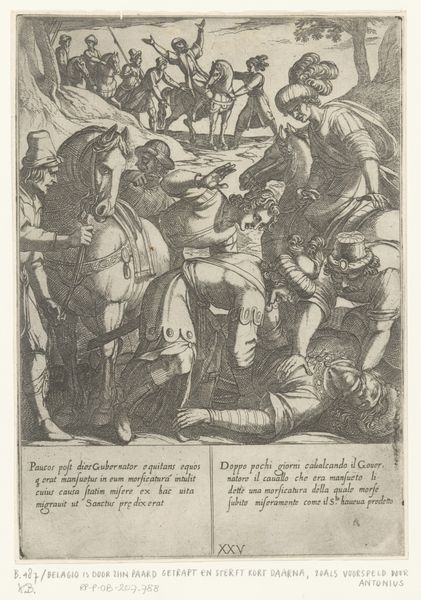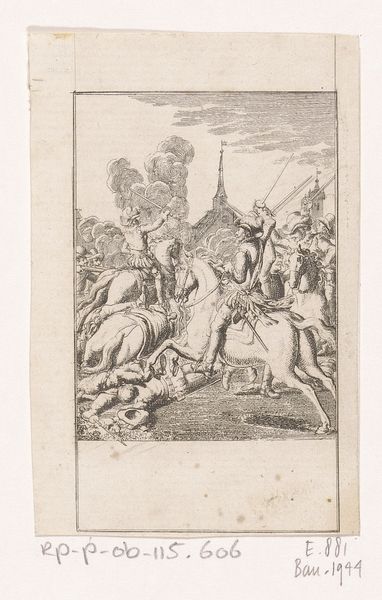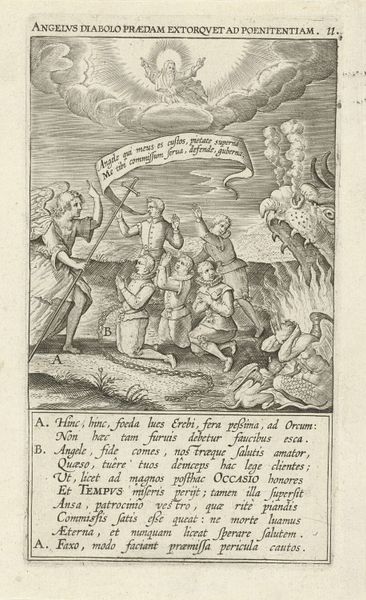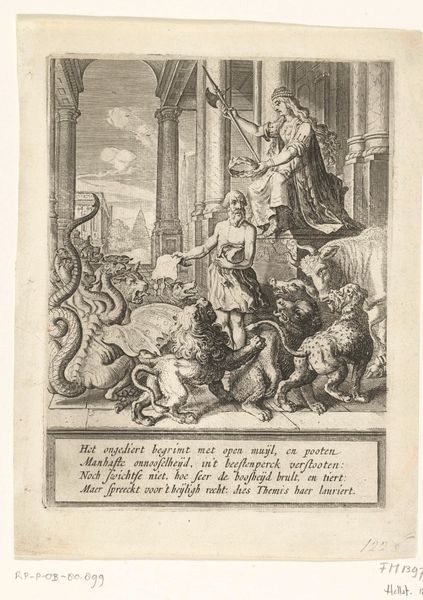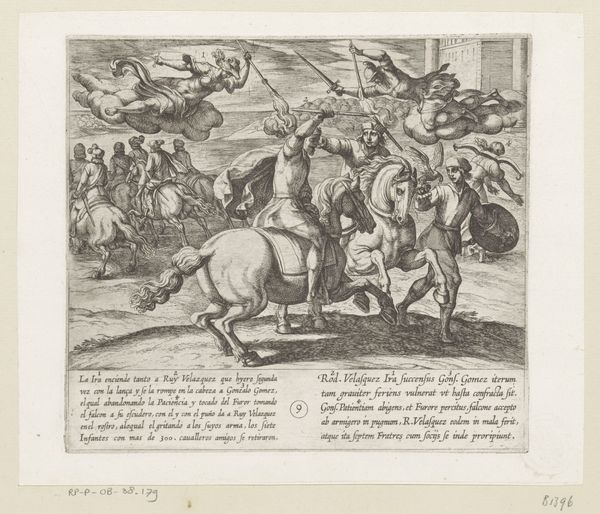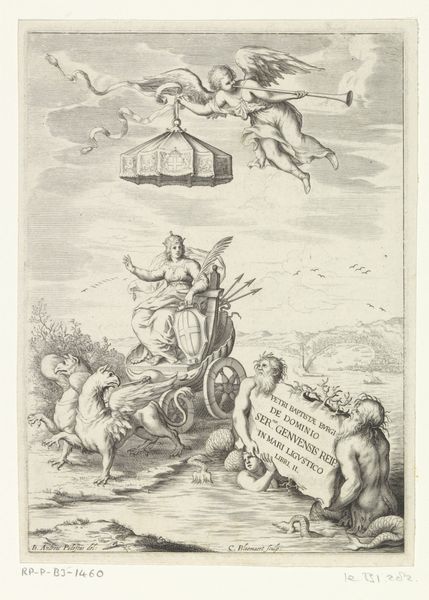
print, engraving
#
allegory
#
baroque
# print
#
figuration
#
line
#
history-painting
#
engraving
Dimensions: height 154 mm, width 87 mm
Copyright: Rijks Museum: Open Domain
Curator: Here at the Rijksmuseum, we have an engraving by Theodoor Galle from 1603, titled "Sinful Youths Being Led to Hell." Editor: It’s a rather unsettling piece, isn’t it? That cavernous mouth agape on the right dominates everything, casting a sense of inescapable doom over the whole composition. The lines are so precise, yet they create a swirling, almost frantic energy. Curator: Galle was deeply influenced by the artistic and social currents of his time. The engraving speaks to the Baroque era's obsession with morality and the consequences of sin. Printmaking served as a potent tool for disseminating these cautionary tales throughout society. Editor: And what about the making of this specific image? Looking closely, the texture achieved through the engraving process really emphasizes the contrast between the youths’ soft skin and the scaly, almost industrial look of the demonic figures and the hell-mouth itself. The crispness of the lines, possible because of the chosen medium, suggests an unflinching approach to the subject. Curator: Absolutely. Galle, and printmakers like him, wielded significant influence, shaping public perceptions through readily available imagery. Consider how this piece intersects with Counter-Reformation ideas, using fear to encourage piety and obedience within established societal structures. Editor: The fashion of the "sinful youths" and their horrified gestures almost feels staged. They are being processed. It makes you consider who defines sin and by what criteria. The labor to create this certainly mirrors labor of judgment—we see this in Galle’s calculated marks that work to morally guide its viewers, but also, inevitably, to judge its subject and his era. Curator: Galle presents an unsubtle narrative on vice and redemption, offering us a peek into the cultural anxieties of 17th-century Europe. Editor: This piece definitely prompts reflection on both its subject matter and the material circumstances that brought such an impactful image into existence. It shows us that, in many ways, cultural anxieties of morality and making converge into a final, rather telling product.
Comments
No comments
Be the first to comment and join the conversation on the ultimate creative platform.
